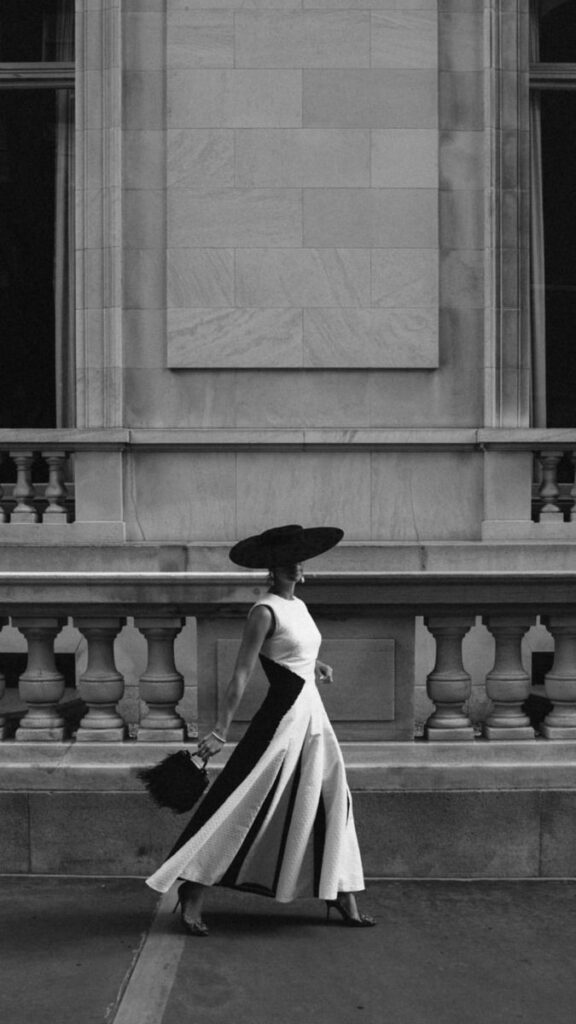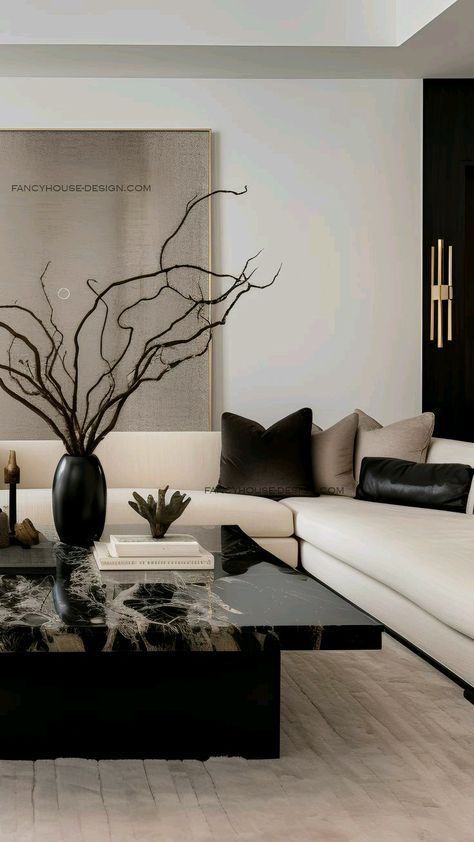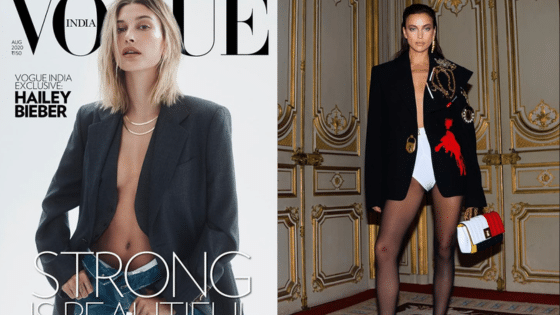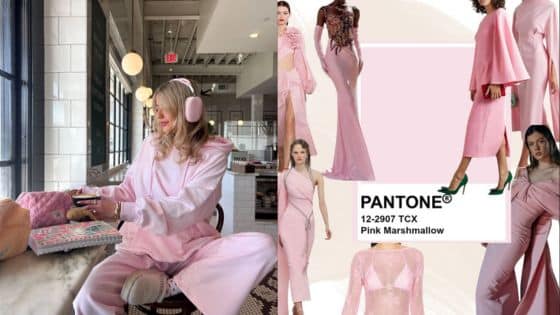

Black and white aesthetics focus on the use of just two colors to create strong visuals and clear contrasts. This style is valued because it simplifies design, making elements stand out without distraction. It captures attention by relying on the power of shape, texture, and light instead of color.
This approach finds use in many areas, including fashion, photography, and interior design. It often gives a timeless and elegant feel, appealing to people who like minimalism and clarity. Black and white can highlight important details that might get lost in color.
Many creators choose black and white to convey mood and meaning clearly. Its simplicity challenges people to look deeper at the subject. This makes black and white aesthetics a popular choice for those wanting a clean and powerful look.
Key Takeways
- Black and white design emphasizes contrast and simplicity.
- It creates a timeless and elegant style across multiple fields.
- The approach helps highlight important details and mood.
Defining Black & White Aesthetics
Black and white aesthetics focus on contrast, simplicity, and form. It emphasizes shapes, textures, and light without the distraction of color. The style carries historical weight and affects viewers emotionally.
Professionals specializing in architecture photography in Canberra capture the city’s striking blend of modern and classic design, proving how black and white imagery can highlight form and contrast in powerful ways.
Key Elements of the Style


Black and white aesthetics rely on strong contrast between dark and light areas. This contrast highlights shapes, shadows, and textures that color might hide. It often simplifies scenes by removing color, allowing the viewer to focus on composition and detail.
Common elements include sharp lines, patterns, and grayscale tones that range from deep blacks to pure whites. The absence of color brings attention to lighting, making shadows and highlights crucial. This creates a clear, bold look that can feel timeless or modern.
Cultural and Historical Significance


Black and white aesthetics date back to early photography and film when color was unavailable. This limitation shaped artistic choices and led to a focus on form and light.
Over time, black and white became a deliberate artistic choice to evoke nostalgia, seriousness, or elegance. It links to classic movies, traditional print art, and historical documents, giving it a cultural weight beyond just style.
The style often signals simplicity, truth, or timelessness because it strips down the visual experience to basic elements.
Psychological Impact


Using black and white affects how people feel. The stark contrast can create feelings of clarity and focus, helping the viewer concentrate on shapes and messages without color distractions.
It can also evoke emotions like nostalgia or seriousness because of its association with old photos and films. Sometimes, the lack of color adds a mood of formality or intensity.
In design or art, black and white can influence how viewers interpret content, often making it feel more direct and powerful.
Applications in Interior Design
Black and white aesthetics create strong contrasts that define space and style. They are useful for shaping moods, highlighting features, and maintaining clarity in different types of rooms.
Living Spaces


In living rooms and bedrooms, black and white offers a clean, timeless look. White walls make rooms feel larger and brighter, while black furniture or accents add depth and structure.
Using a zebra-stripe rug or checkerboard art can create visual interest without overwhelming the space. Textures like a white linen sofa with black metal frames balance softness and strength. This style works well for both minimalists and those who appreciate bold statements.
Kitchens and Bathrooms


Black and white kitchens and bathrooms combine cleanliness with elegance. White tiles or counters give a fresh, hygienic feel. Black cabinets or faucets create sharp lines and modern appeal.
Using these colors can also help hide or show dirt where needed. For example, black grout in a white tiled bathroom resists visible stains. Glossy surfaces in black and white enhance light reflection, making small kitchens or bathrooms seem bigger.
Office and Commercial Spaces


In offices, black and white decorations promote focus and professionalism. White walls reduce distractions, while black chairs, desks, or shelves lend a serious tone.
Commercial spaces use this combo to appear sleek and approachable. Black and white signage is easy to read, and simple color palettes help customers navigate shops or restaurants quickly.
| Area | Key Uses | Benefits |
|---|---|---|
| Living | Accent furniture, contrasts | Space definition, balance |
| Kitchen/ Bath | Tiles, countertops, fixtures | Clean look, stain control |
| Office | Furniture, signage | Focus, professional feel |
Fashion and Personal Style
Black and white aesthetics create a timeless, clean look in fashion. This style uses strong contrasts and simple shapes to make bold statements. It values key outfit pieces and smart accessories to complete the look.
Iconic Looks and Trends


The black and white style became famous through designers like Coco Chanel and brands such as Saint Laurent. Classic pieces include the little black dress and white button-up shirts, which never go out of style. Monochrome suits or dresses are popular in both casual and formal settings.
In recent years, stripes and checkerboard patterns have been trendy within this aesthetic. These patterns add visual interest without disrupting the simple color scheme. People often choose this approach for workwear, street style, and evening events.
Wardrobe Essentials


A black blazer is a must-have for anyone embracing this style. It pairs well with white shirts, black pants, or skirts. White tees and black skinny jeans offer versatile basics for daily wear.
Quality fabrics like cotton, silk, and wool enhance the minimalist vibe. Keeping cuts simple and clean ensures clothes remain stylish across seasons. Items like tailored trousers, midi skirts, and classic coats anchor the wardrobe.
| Essential Item | Why It Matters |
|---|---|
| Black Blazer | Sharp, versatile, classic |
| White Button Shirt | Clean, bright, pairs with all |
| Black Skinny Jeans | Casual but polished |
| Midi Skirt | Adds elegance without color |
Accessories and Footwear


Accessories in this look tend to be minimal and functional. Black or white handbags with clean lines maintain the theme. Jewelry is often silver or gold but kept simple, such as thin chains or small studs.
Footwear focuses on black or white shoes, often polished leather or canvas. Loafers, ankle boots, and simple sneakers are common. This selection supports the monochrome look without drawing too much attention away from the outfit.
Key accessory tips:
- Keep bags structured and color-matched
- Choose jewelry that does not overwhelm
- Select shoes that are comfortable and classic
Photography and Visual Arts
Black and white aesthetics focus on contrast, texture, and shapes to create strong, clear images. Artists use specific techniques to highlight details without color. The work of famous photographers shows how powerful black and white visuals can be. Different tools and methods, both old and new, shape how these images are made.
Black & White Photography Techniques


Photographers use light and shadow to bring out texture and depth in black and white photos. They often adjust contrast levels to make details sharper or softer. Techniques like high contrast emphasize strong lines, while low contrast creates a smooth, gentle look.
Filters and film choice also matter. A red filter, for example, can darken skies and make clouds stand out. Painters and photographers both rely on composition to guide the viewer’s eye through the image. Framing and angles are crucial in black and white to add drama.
Famous Artists and Photographers


Ansel Adams is a leading figure in black and white photography. His use of sharp focus and rich gradients brought out the beauty of natural landscapes. Henri Cartier-Bresson is known for capturing candid moments and street life, showing human emotion in simple tones.
Other notable artists like Man Ray explored surrealism with black and white. Their work proved that color is not necessary to convey mood or story. These figures set standards for how black and white images communicate ideas and feelings.
Digital and Analog Methods


Black and white images can be created both with film cameras and digital tools. Film photography uses black and white film that reacts to light. Development in a darkroom lets artists control contrast and exposure manually.
Digital cameras capture color but can convert photos to black and white with software. Programs like Photoshop allow precise adjustment of brightness, contrast, and tone. Both methods have unique qualities; film offers grain and texture, while digital provides control and convenience.
Graphic and Web Design
Black and white design relies on contrast and simplicity. It requires careful thought about how users interact with the interface, how text appears, and how the design supports the brand’s identity.
UI/UX Considerations

In black and white design, clarity is key. The contrast between black and white helps highlight important elements like buttons and links. Designers must ensure the interface is easy to navigate and readable without relying on color cues.
Using different shades of gray can create depth and separate sections. However, too many grays can confuse users. The balance between black, white, and gray helps guide attention and improve usability.
Accessibility is important. Designers should check contrast ratios to make sure text is readable for users with vision impairments. Icons and images may need extra emphasis since there are no colors to differentiate them.
Typography in Monochrome


Typography stands out in black and white designs because text is the main focus. Clear fonts with strong shapes work best to maintain readability on all screen sizes.
Serif and sans-serif fonts can both work well, but the choice depends on the tone. Sans-serif is often cleaner and modern, while serif can add elegance and tradition.
Bold and italic styles help create hierarchy and emphasis without relying on color. Spacing between letters and lines also improves legibility and gives the text room to breathe in a monochrome layout.
Branding with Black & White


Using black and white in branding creates a strong and timeless look. It suggests sophistication, simplicity, and professionalism.
Brands use black and white to focus attention on logo shapes and fonts. This removes distractions and makes the brand easy to recognize in different settings.
The challenge is to express personality without color. This means choosing the right black and white tones and combining visual elements like shapes, lines, and textures to support the brand message.
Film and Media Influences
Black and white aesthetics have played a key role in shaping film history and media. They reveal moods, styles, and storytelling techniques that color film can sometimes blur or soften.
Cinematic Trends


Early films were mostly black and white due to technology limits. Over time, filmmakers used this aesthetic to highlight shadows, contrasts, and emotions.
Film noir, a style from the 1940s and 1950s, embraced black and white to create dark, mysterious atmospheres. It used sharp lighting contrasts and deep shadows to highlight crime and moral conflict.
Even after color film became standard, directors chose black and white to bring focus to storytelling and character depth. It often helps viewers focus more on shapes, textures, and facial expressions without color distractions.
Notable Black & White Films


Some black and white films are considered classics and shaped cinema culture.
- Citizen Kane (1941): Known for its innovative storytelling and lighting techniques.
- Casablanca (1942): A romantic drama praised for its sharp contrasts and timeless mood.
- Psycho (1960): Used black and white to heighten suspense and psychological tension.
These films proved black and white could powerfully convey story and emotion. They remain influential in film studies and media arts.
Modern Interpretations


Today, black and white is a deliberate choice, not a limitation. Directors use it for style, mood, or to give films a timeless or artistic feel.
Films like The Artist (2011) and Roma (2018) used black and white to connect viewers with past eras or emphasize emotional themes.
In media beyond film, black and white continues to influence photography, advertising, and music videos. It often signals seriousness or evokes nostalgia in these fields.
Incorporating Black & White into Daily Life
Black and white can add a clean and classic look to many areas. It works well with art, events, and everyday products. Using these tones carefully brings balance and style without overwhelming a space or task.
Art and Decor Choices


Using black and white in art helps focus attention on shapes and lines. People often choose black and white prints, photographs, or paintings because they highlight contrast. These pieces can fit in any room and match most styles.
For decor, black and white furniture and accessories create a sleek look. Items like black picture frames, white vases, or patterned rugs add interest without too much color. Mixing textures, like smooth metal and soft fabric, keeps the space feeling layered and real.
Event Planning


Black and white themes make events look tidy and stylish. Invitations, table settings, and decorations use these colors to create a unified feel. For example, white tablecloths with black napkins and silverware keep the setup simple but elegant.
Choosing black and white balloons, flowers, and lighting helps bring the theme to life. It works well for formal events like weddings or dinners and for casual parties where a clean look is preferred. The contrast keeps things visually clear and organized.
Lifestyle Products


Many lifestyle items use black and white for their timeless appeal. Watches, phones, and bags often come in these colors because they look good with many outfits. The simplicity also makes these products easier to match over time.
Indoor essentials like kitchen tools and bedding in black and white are popular too. For example, black cookware paired with white countertops feels modern and neat. Black and white clothing basics, like shirts and shoes, fit well into any wardrobe.
Challenges and Limitations


Black and white aesthetics can limit the expression of certain ideas. Without color, it can be harder to show emotions tied to hues of red, blue, or green. This reduces the range of moods an image or design can convey.
It also makes it challenging to depict scenes where color contrast is important. For example, distinguishing objects with similar gray tones can be difficult. This can cause confusion and reduce clarity.
Another challenge is that some viewers may find black and white less engaging. Color often attracts attention and keeps interest. Without it, the work might appear less lively or dynamic to some people.
Technical issues can also arise. Photographers and designers must focus more on light, shadow, and texture. This requires skill and experience, or the final product might look flat or dull.
| Challenge | Explanation |
|---|---|
| Emotional expression | Limited mood range without color |
| Object distinction | Harder to separate similar gray tones |
| Viewer engagement | Less vibrant for some audiences |
| Skill requirement | Needs strong grasp of light and texture |
These points show that black and white aesthetics require careful use to avoid potential downsides.
Future of Black & White Aesthetics


Black and white aesthetics will continue to hold value in art and design. Its simplicity and contrast create a timeless look that appeals across different styles and media.
Technology will play a key role in the future of black and white visuals. Advances in digital imaging and editing tools allow creators to experiment with texture, shading, and contrast more precisely than before.
Many designers and photographers will still choose black and white for its ability to highlight form and structure. It helps focus on details without the distraction of color.
The use of black and white may expand in virtual reality (VR) and augmented reality (AR). These platforms could use monochrome styles to create unique user experiences or emphasize certain elements in a scene.
Below are some trends expected in black and white aesthetics:
| Trend | Description |
|---|---|
| Minimalism | Clean, simple designs emphasizing space |
| High contrast photography | Sharp difference between light and shadow |
| Mixed media | Combining black & white with color or textures |
| Digital enhancements | Using software to deepen details or effects |
Black and white aesthetics will not lose relevance. Its basic and bold nature keeps it relevant in both traditional and modern creative fields.
- 7shares
- Facebook0
- Pinterest7
- Twitter0
- Reddit0












